What is Sciatica?
Sciatica is a general term used to describe back pain that travels down the leg. While it doesn’t have an official definition, it is often used to specify pain in this area though to be related to a nerve or nerve root. Loss of normal function of a nerve is called radiculopathy and is often associated with the experience of “pins and needles” or a dull, burning ache. [1]
Do I need to See a Doctor?
In addition to the discomfort, back pain can also be scary for some. That doesn’t mean you always need to see a doctor, even if you think it’s sciatica.
However, there are a few specific situations that you should see a doctor for before trying some of the relief methods in the next section. Here are a few situations where we’d recommend getting in touch with your doctor:
- A sudden slip, fall, or other injury followed by an inability to stand up or bear weight
- New bowel or bladder problems like incontinence, inability to go to the bathroom, and/or altered sensation in the groin area
- Low back pain associated with unexplained weight loss, fevers, recent illness, or history of cancer
- Pain going down your leg that’s progressively getting worse
Typical “non-specific” low back pain resolves in an average of 6 to 8 weeks, whereas the timeline for radicular symptoms can vary. Among people with new radicular pain, about a third will get better quickly, another third will improve a bit, and the final third will stay the same or potentially get worse.
If you’re not experiencing any of these symptoms, that’s great. The following section will focus on some exercises to help you feel better and get back to doing all the things you want to do.
Which Exercises Offer Immediate Relief for Sciatica Pain?
It’s important to note that there aren’t any specific exercises that work every time to relieve pain and return to the desired activity. Similarly, there aren’t any movements need to be avoided forever after sustaining a low back injury or dealing with sciatica. Instead, we can think of exercises we’d recommend performing first as symptom modification exercises. Here are some 8 – 30 minutes exercises that can help you get start getting relief from sciatica pain:
- Walking
- Stretching
- Bird Dogs
- Planks
- Sciatic Nerve Glide
- Femoral Nerve Glide
- Cobra Push-Ups
- Jefferson Curls
We’re going to start with exercises designed to improve both sciatica symptoms and function. These symptom modification exercises are unweighted or use light resistance, tend to be more limited in range of motion, and often work relatively small areas of the body.
They are aimed at reducing symptoms and improving function [2]. These types of exercises can be beneficial by allowing for non-threatening movement to build confidence, particularly if someone is experiencing a lot of pain and dysfunction.
For example, trunk (core) strengthening exercises, stretches for irritated nerves (typically called nerve glides or nerve flossing), repeated motions, or even walking would all qualify as symptom modification exercises. In contrast, traditional exercises typically involve more weight, larger ranges of motion, train larger areas of the body, and use implements like dumbbells, barbells, kettlebells and so on.
The mechanisms by which these exercises help to reduce symptoms isn’t as straightforward as you may think. For example, trunk strengthening exercises are often prescribed to improve ‘core stability’ to help reduce the risk of or treat low back pain. However, there are a few issues here.
First, there is no consensus definition of ‘core stability’, which makes it difficult to accurately assess and measure. Second, the current scientific evidence doesn’t really show that these exercises reliably prevent injury or reduce symptoms (including pain) more than any other kind of exercise. [3]
Mechanisms aside, our favorite symptom-modification exercises for sciatica are:
Trunk Strengthening Exercises
1. Bird Dogs
- Programming: 2 to 4 sets of 10 to 20 reps (should feel challenging, but not more painful than when you started)
- Weight: Bodyweight only
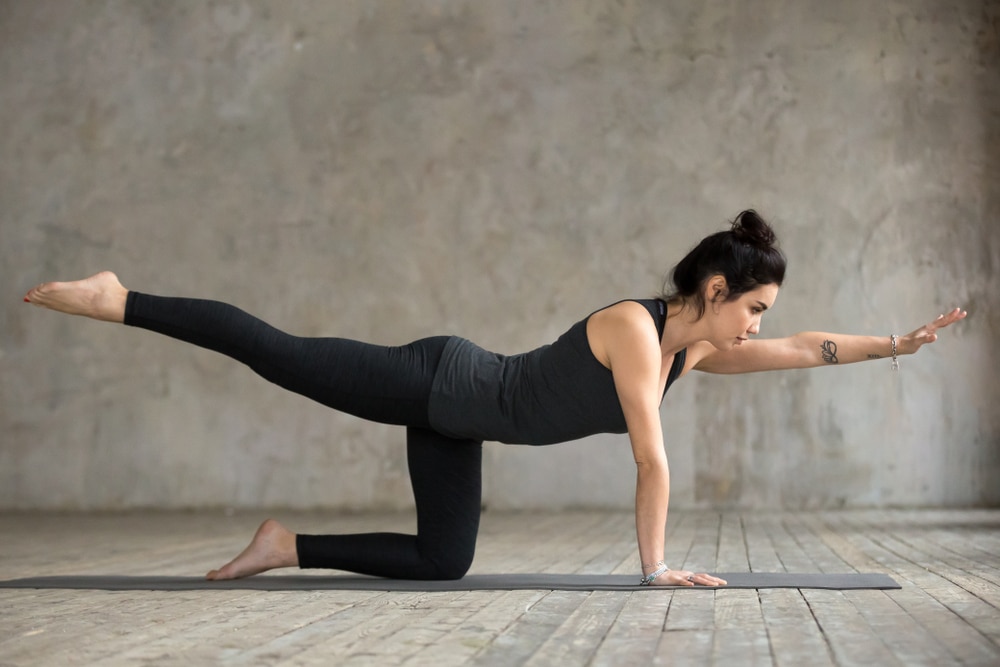
2. Planks
- Programming: 2 to 4 sets of 10-to 30-second holds reps (should feel challenging, but not more painful than when you started)
- Weight: Bodyweight only
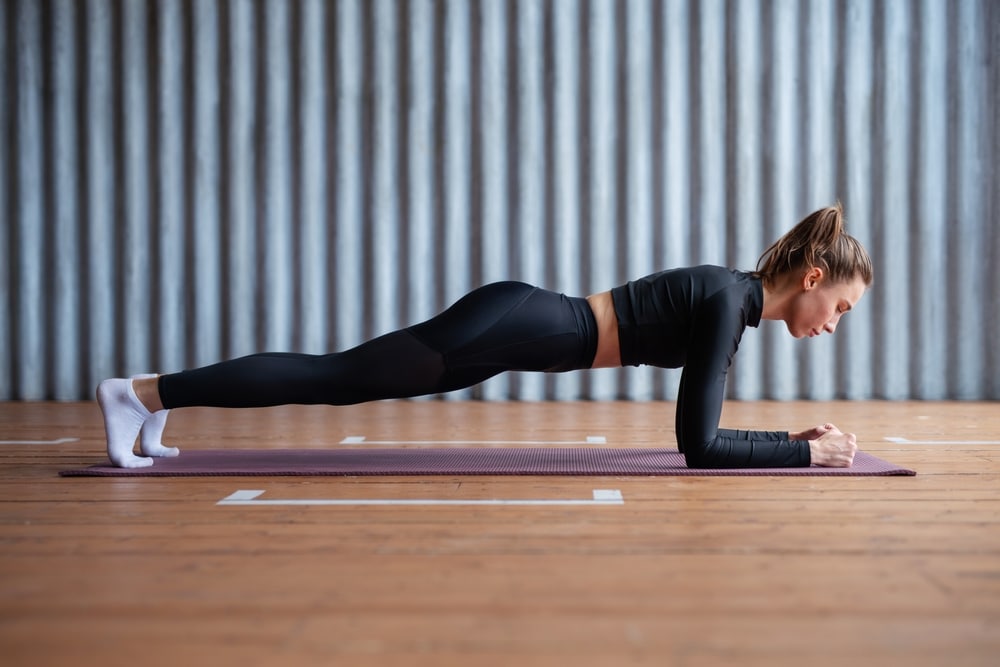
Nerve Glide Exercises
1. Sciatic Nerve Glide
- Programming: 10 sets x 5 second holds through a tolerable range of motion
- Weight: Bodyweight only
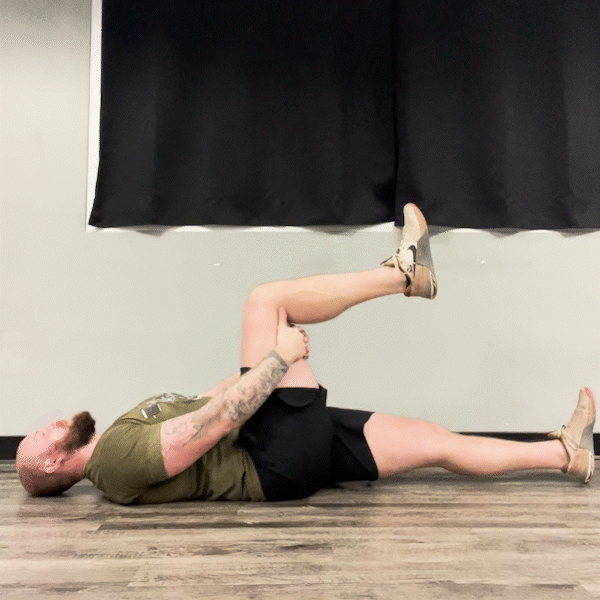
2. Femoral Nerve Glide
- Programming: 10 sets x 5 second holds through a tolerable range of motion
- Weight: Bodyweight only
Repeated Motions Exercises
1. Cobra Push-Ups
- Programming: 2-4 sets x 10-20 reps
- Weight: Bodyweight only
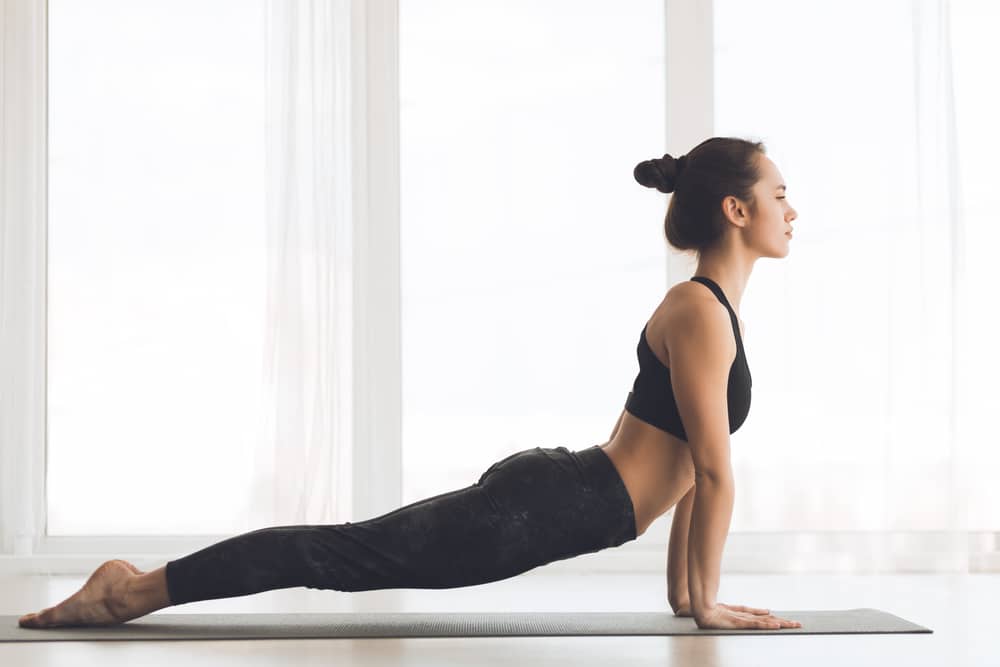
2. Jefferson Curls
- Programming: 2-4 sets x 10-20 reps
- Weight: Bodyweight only
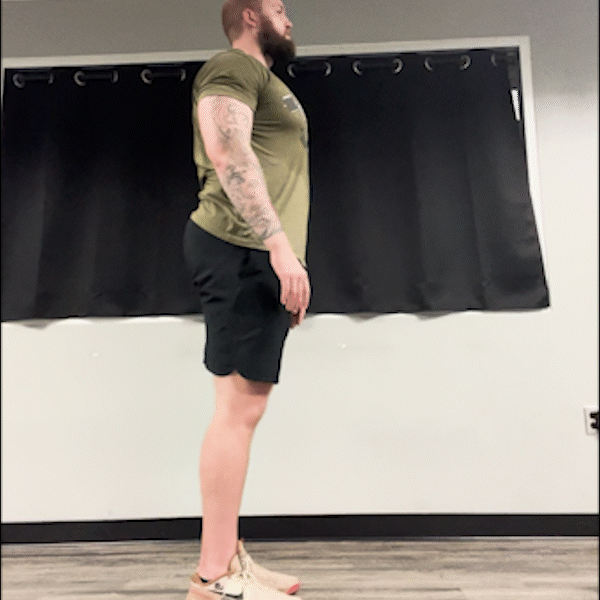
General Movement Exercises
1. Walking
Programming: Three 20 minute walks per day to break up sitting

2. Stretching
Programming: 3 sets x 30 second holds on 5 to 6 selected stretches

| Exercise Category | Example Exercises | Example Exercise Prescription |
|---|---|---|
| Trunk Strengthening | Bird dogs, planks, sit-ups | 2-4 sets x 10-20 reps |
| Nerve Glides | Sciatic nerve glides, femoral nerve glides | 10 sets x 5 second holds through a tolerable range of motion |
| Repeated Motions | Cobra push ups, Jefferson curls, cat-cow | 2-4 sets x 10-20 reps |
| General Movement | Walking, stretching, yoga | -Three 20 minute walks / day- 3 sets x 30 second holds on selected stretches-Yoga routine of choice |
At the end of the day, the goal of symptom modification movements is to reduce discomfort and improve function. Experimenting with these movements can be useful to determine if there are any that provide significant relief. If so, including them in a daily routine or before a workout can help reduce pain and allow for a better workout.
These movements can likely help with low back pain and sciatic symptoms in the short-term, but it should be noted that they’re not absolutely necessary. Instead, most people’s pain will get better with the passing of time, patience, and graded exposure to pretty much any of the activities that you want to do. In short, it’s far more important that you move rather than doing specific movements. With time and gradual introduction of more challenging traditional movements, you’ll be back sooner than you think!
Normal Exercise With Low Back Pain
In contrast to symptom modification exercises, more traditional exercises tend to include additional weight, use larger ranges of motion, and train larger amounts of muscle at once. Exercises using a barbell, dumbbell, kettlebells, machines, and bodyweight exercises would all be included here.
Based on an individual’s goals and symptoms, the incorporation of traditional exercises should likely be a part of rehabilitation from early in the process. In other words, if someone feels up to doing more exercise after the symptom modification movements, we’d recommend it. Motion is lotion in this context.
Exercises can be scaled and modified to help find an entry point that is tolerable. To do this, modifying the rep ranges used, total volume, tempo, range of motion, and loading may be necessary. Consider the following modifications:
| Variable | Normal | Modifications |
|---|---|---|
| Exercise | Barbell Squat | Goblet Squat |
| Volume | 5 reps x 5 sets | 12 reps x 3 sets |
| Intensity | RPE 6 to 8 | RPE 5 to 7 |
| Tempo | As fast as possible | 3-1-0* |
Overall, the idea is to be able to make modifications to each exercise so that each workout is completed without a significant increase in symptoms. By stacking small wins together in training, we can gain more confidence and take control of our back pain.
Work With Us
Whether it’s non-specific low back pain or sciatica, training with pain can be a delicate process. Sometimes things resolve quickly and other times it’s hard to even find a place to start. Some of the exercises we’ve listed today are best done until failure, so it’s crucial to program correctly to avoid injury or fatigue. We’d love to help you get the perfect hypertrophy program to maximize your gains and prevent setbacks.
At Barbell Medicine, we offer evidence-backed programs based on the latest developments in sports science. If designing your own program seems overwhelming and you’re unsure where to start, our low back pain rehab template is a good starting point. If you continue to experience symptoms, our pain and rehab team offers consultations and rehab focused programming that is tailored to your specific situation. We would be more than happy to help.
References:
- Bogduk N. On the definitions and physiology of back pain, referred pain, and radicular pain. Pain. 2009 Dec 15;147(1-3):17-9. doi: 10.1016/j.pain.2009.08.020. Epub 2009 Sep 16. PMID: 19762151.
- The Role and Value of Symptom-Modification Approaches in Musculoskeletal Practice. Gregory J. Lehman. Journal of Orthopaedic & Sports Physical Therapy 2018 48:6, 430-435
- Wirth K, Hartmann H, Mickel C, Szilvas E, Keiner M, Sander A. Core Stability in Athletes: A Critical Analysis of Current Guidelines. Sports Med. 2017 Mar;47(3):401-414. doi: 10.1007/s40279-016-0597-7. PMID: 27475953.